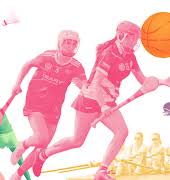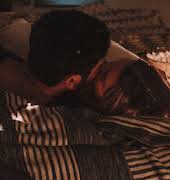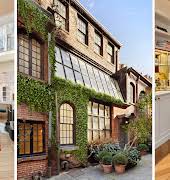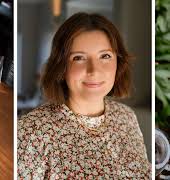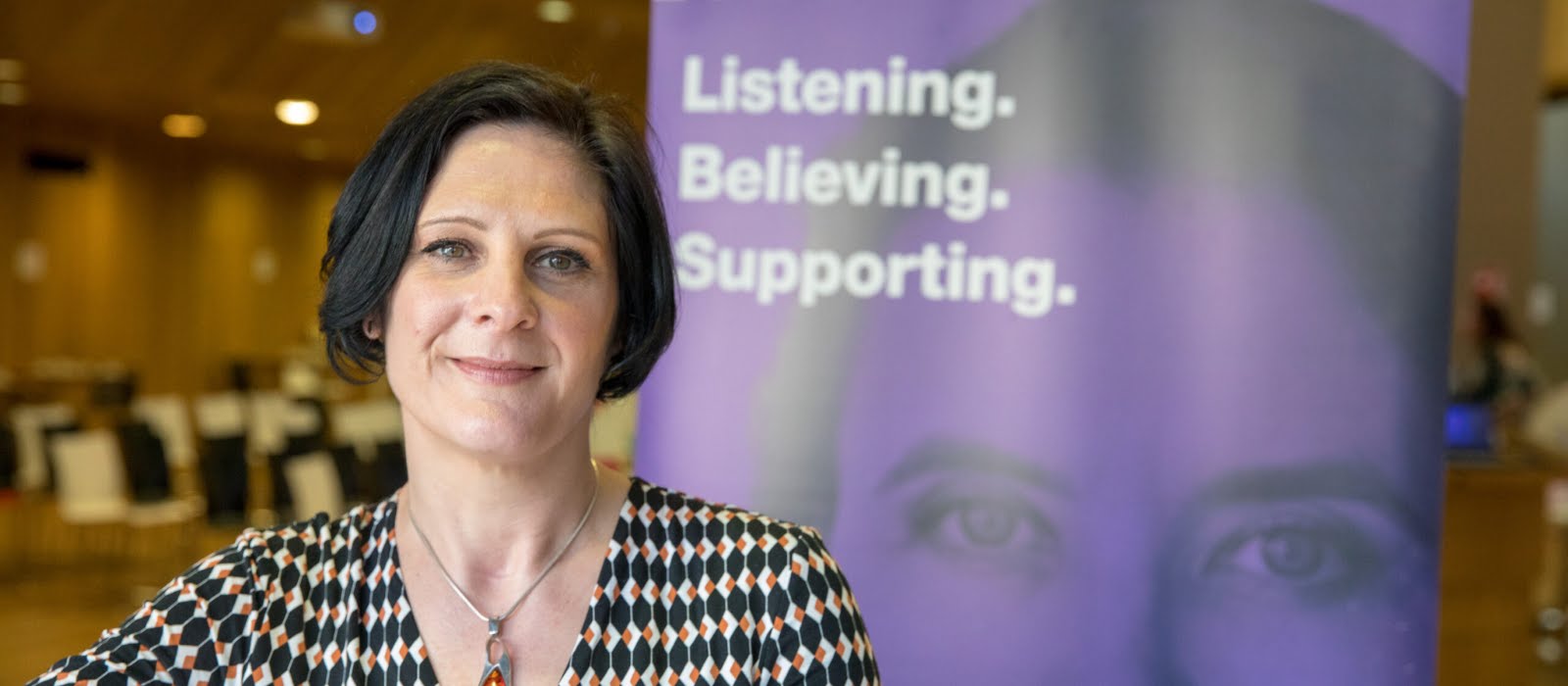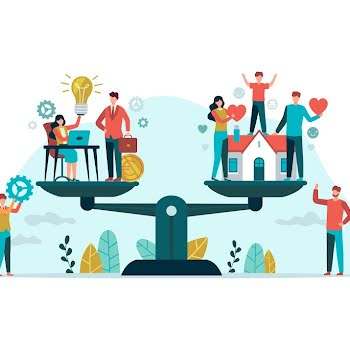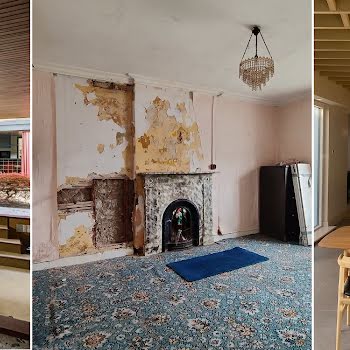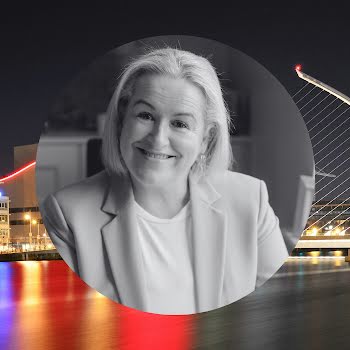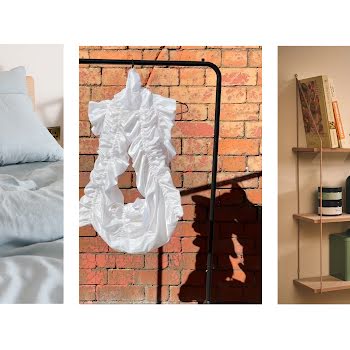Women's Aid
Sarah Benson, CEO of Women’s Aid, on how abuse starts and how victims can get help
This year, Women’s Aid released its Annual Impact Report 2023, which detailed 40,048 disclosures of domestic abuse against women and children last year. This huge number marked an 18% increase in disclosures of domestic abuse compared to the previous year and the highest ever received by the organisation in its 50-year history. These reports of abuse included emotional abuse, physical violence, sexual abuse, and economic control – with many combining to constitute coercive control. The report noted an alarming increase in both physical violence (up 74%) and economic abuse (up 87%) compared to the previous year. To examine what this report means about abuse against women in Ireland, our misconceptions about abuse and how we can combat it, Roe McDermott spoke to the CEO of Women’s Aid, Sarah Benson, and heard from a survivor about how abuse can begin – and how victims can find help.
It was alarming to read that 2023 marked a record high for disclosures of domestic violence. When discussing an increase in calls or requests for support, it can sometimes be difficult to discern whether the increase is due to a rise in actual incidents of domestic violence, or an increase in women reporting incidents of abuse, which would indicate that there is more awareness among victims that supports are available. The hope is that it’s the latter, which would demonstrate that the concerted effort Women’s Aid has been putting into its educational and awareness campaigns is showing results. Sarah Benson, the Chief Executive Officer of Women’s Aid, states that particularly during the pandemic, Women’s Aid was very focused on ensuring that women who were left vulnerable and isolated and perhaps living with abusers were made aware of available support, and the increase in reporting to Women’s Aid may be the result of those campaigns.
“We have been able to have a much more comprehensive public dialogue on domestic violence, and certainly it has increased as a stated Government priority, and as a stated policing priority during Covid 19 we would have been very, very focused on trying to ensure that those who were suffering domestic abuse were not forgotten or left behind.” The pandemic made many abuse victims very vulnerable not only in not being able to leave their homes but being cut off from their usual support networks and usual daily activities like going to work or bringing children to school, which could have been times of respite away from an abusive partner at home.
There were increased reports of abuse and domestic violence to both Women’s Aid and the Gardaí during the pandemic, and Benson is hopeful that victims are becoming more aware of the supports available to them while also remaining acutely aware that reported incidents of abuse merely represent the tip of the iceberg. “What I want to hope is that there is a greater willingness to reach out and get support,” says Benson. “We do know that it has always been the case that the majority of those who suffer any form of abuse, whether it is child abuse, sexual abuse, or domestic violence – most will not reach out to a specialist service, and often they’ll reach out to nobody at all. That’s something that is absolutely heartbreaking to think about. We of course hope it does mean that there is a greater level of reporting, but at the same time, what it is showing us is that this is an absolutely huge issue still, every minute of every day in this country.”
Coercive control and the Venn diagram of abuse
Women’s Aid has been responsible for several important campaigns over the past few years, including the Too Into You campaign, which serves to educate young people about the difference between healthy relationships, unhealthy relationships, and abusive behaviour. Their research into relationships for young people in Ireland showed that one in five young women aged 18-25 have been abused by a current or ex male partner, with emotional abuse being the most common form of abuse for young women. Women’s Aid has also done a huge amount of work around educating people about the nature of coercive control, which is a form of abuse that can involve physical, sexual or financial abuse but also a pattern of intimidation, humiliation, surveillance, isolation and threats in order to trap the victim in a relationship, making it difficult to dangerous to leave. While many women have experienced coercive control, it has only been recognised as a criminal offence in Ireland since January 2019. While a more widespread understanding of the nature of coercive control has been beneficial, Benson notes that there is still much more educating to do about the complex and often overlapping nature of abuse in all its forms.
“I do think that there is a greater understanding, but it’s still not universal,” says Benson. “Domestic abuse in particular does not always mean physical violence, and we can recognise that where there is physical violence, there are always patterns of other abusive and controlling behaviour.” Benson applauds the criminalisation of coercive control, which can be particularly helpful for women who have not been physically or sexually assaulted and so may not think of themselves as victims of abuse – but Benson points out that not only does coercive control cause huge damage to its victims, but the underlying shape of coercive control is that of any other kind of abuse, and often overlaps. The common understanding of abuse, which says that physical or sexual violence must have occurred, is limited and undermines the experience of emotional, financial and coercive abuse – and how one form of abuse can rapidly spread and escalate.
“I’ve been working between the domestic and sexual violence sector for over 25 years, and when I first read the definition of coercive control, I just said ‘that’s just domestic violence’”, says Benson. “There’s a tool called the power and control wheel, which was developed by survivors in the United States to try and show what the experience of domestic abuse is. It maps out all of the different kinds of tactics, such as denying the abuse, blaming the victim, using children, emotional abuse, economic abuse, and so many different tactics, which basically means that every facet of the life of somebody who has been subjected to abuse has the imprint of their abuser on it, or that they have to think about their abuser’s reaction before they make even the smallest decision in their day to day life. That is coercive control because the impact and the consequence of that is to shrink somebody’s life, to make it so small, to make their room for manoeuvre so narrow. It’s actually called a liberty crime, and when you see the impact of it, we can understand why. But putting it in our criminal statute has the potential, over time, to be transformative in understanding these many, many different tactics and behaviours, which alone may not constitute a crime, but when taken together, show that really devastating pattern of concerted abusive behaviour.”
Kasia is a survivor, who contacted Women’s Aid for help. Like many women, when Kasia first met her abuser, he was kind and charming, but he slowly turned abusive, crossing boundaries and ramping up his behaviour over time. “I met him shortly after I arrived in Ireland,” says Kasia. “He was handsome and so kind, romantic and attentive. I felt so special and protected. At that time, I had very little English, but we both worked hard, and we made a home. Everything was going well. Then I became pregnant, and it was like he turned a dimmer switch. Everything began to get darker. I think he suddenly felt ‘now I own you’. Bit by bit, over the years, he crossed every personal boundary I had. Mental, physical, sexual and social. He was jealous and suspicious. He made me leave my job. He shamed me on social media in my role as a mother. He stopped me from studying. He monitored my phone and my movements. It was a vicious cycle. He would erupt in fury and violence over nothing. His dinner. The ironing. Sex. He would storm out. Then he’d return in a few days and ‘forgive me’ – as if I was the abuser. And the cycle would start again.”
Financial abuse and how the housing crisis is impacting victims
One often unaddressed form of abuse is financial abuse, where abusers gain power and control by controlling spending, concealing information, limiting the victim’s access to money or other assets and moving or spending money without the victim’s knowledge. Financial abuse also includes other ways of gaining financial control over a victim, such as forbidding them from working, sabotaging employment opportunities or refusing to pay bills or racking up debts so the victim is penalised.
Kasia’s experience shows how financial abuse serves to control and trap victims. “He worked in a bank, and I didn’t have a bank account. He gave me a tiny budget to pay for the children’s needs. We were living in poverty while he was leading a carefree social lifestyle.”
Abuse always exists within its social context, and with Covid, Women’s Aid was aware that many women were trapped at home with abusive partners. In Ireland, the housing crisis and cost of living crisis have made many people across the country far more financially vulnerable, and this vulnerability can heighten the danger for abuse victims. Benson says that reports of financial abuse have been increasing, and many victims of all types of abuse are finding themselves stuck living with an abuser because they cannot afford to move out or find somewhere affordable to live.
“It’s absolutely having an impact,” says Benson. “It’s interesting because I actually used to manage the National Domestic Violence helpline and I did so at the time when the last big recession hit, and we were starting to see the impact there, where people were stuck in homes, where perhaps they were in negative equity and couldn’t get out, couldn’t leave, couldn’t buy the assets, couldn’t get away. And now we see something different, which is similar in that rents are just far too extortionate to divide households. There’s a lot of focus often on refuge, which is a really important component of a domestic violence response – but it is only ever going to be an emergency, short-term solution. If you are the one who has to leave which, in itself, begs the question, why should it be the person who is at risk and who is being harmed who has to leave? And often there may be children as well – do they have to leave the home, as opposed to the person causing harm? What happens then is, if they can’t get on a housing list, or they aren’t being assessed on the basis of the fact that they may have had to flee home, something that you know is on paper and assets, but in reality is an unsafe space, then they can’t make applications for local authority housing, for example. So we do know that women go back because they may be trading safety for homelessness, and that’s a really difficult decision they have to make. If you have children, it’s a really hard decision to make and so many women will go back, and they will try and manage the situation as best they can until their options change. So the new national strategy is absolutely crucial in that it is a cross-cutting strategy, and that really does have to include our national housing strategy, which doesn’t currently have that gender focus and doesn’t currently include consideration of special circumstances whereby domestic abuse is the cause of the homeless situation or the other housing need.”
An intersectional understanding of vulnerability
A report conducted by Dublin City Council highlighted the multipronged nature of abuse. The report found that certain areas of Dublin like Ballyfermot and Cherry Orchard are “disproportionately affected” by “elevated” levels of violence against women, with numerous people in Dublin 10 living with ongoing “risk of lethal violence.” The report was prompted by a 2020 HSE assessment that showed that domestic violence was a key factor in suicides among women in the area. The DCC report showed that many young women were being “groomed” into abusive relationships with the promise of drugs; viciously physically beaten, often with lasting injuries including head trauma and brain injuries; and forced to perform sexual acts for drugs. The DCC report said that “the scars, both physical and emotional, are lasting, eroding the victim/survivors’ sense of self and safety” and the ripple effects of the scars were felt through generations, as children who grow up around abuse and violence went on to accept and/or perpetuate abuse in their own relationships.
To Benson, the harrowing report from the DCC showed that tackling abuse requires a coordinated strategy that tackles many of the root causes of abuse and the obstacles that can prevent victims from escaping. “When we look at domestic abuse and how we think about it in society, often there’s the question of, ‘where is the home’, when we’re talking about the response to domestic abuse but it’s not just an individual home issue. It’s a public health issue, it’s a social issue, it’s a justice issue, and it is something that you have to look at in a very intersectional way. It’s like a chicken and egg in some situations. In my previous work, I would work with victims of sexual exploitation, including when they find themselves in prostitution and things like that, and you had this horrendous kind of triangulation of addiction, abuse and exploitation, and mental health as well. It’s sometimes hard to pull back the layers of a woman’s experience, and sometimes it absolutely started in childhood, whether it was addiction or neglect or abuse. What we do know is that this creates an exceptionally complex set of needs that we are responding to.”
Benson explains how socioeconomic factors, education, childhood abuse, lack of support systems and mental health issues can all make some victims particularly vulnerable to abuse, or prevent them from escaping once abuse starts. “Somebody might grow up in a home where there is disadvantage or neglect or in a community where there are challenges with drug dealing and if you’re coming from disadvantage, if your life options are fewer, if you have an educational disadvantage, if you have the disadvantage of social capital, all of those things feed into creating vulnerability and risk. For women in particular, there is that vulnerability and risk of both sexual and domestic abuse. So you can’t parse them out, and sometimes you can’t say which is the starting issue, because you are looking at things across generations sometimes.”
Not that privilege always protects women, as Benson notes. “It’s really important to say that domestic abuse is one of the most democratic of all crimes. The single greatest risk factor is being born female, and after that, it is present in every ethnic group, every faith group, every socioeconomic group.” However, it is important to note that some women may face more social barriers to leaving an abusive situation than others. “If you haven’t had access to a significant amount of education, or if you don’t have a network that has a level of affluence, options economically might be limited,” explains Benson. “Options to exit, leave, thrive – those are all impacted significantly by sometimes even our earliest life experiences.”
Dismantling the Perfect Victim trope
Earlier this year the country was outraged by the assault of Natasha O’Brien, who was viciously attacked and assaulted by Cathal Crotty as she tried to stop Crotty from hurling homophobic abuse at passersby. Crotty grabbed O’Brien by the hair, punched her in the face and left her unconscious in the street. He later bragged about punching her on social media. There was nationwide outrage when Crotty received only a suspended sentence, and O’Brien spoke eloquently, articulately and emotively about the trauma of her experience.
There is absolutely no question that the violence O’Brien suffered was horrific and her bravery inspirational. But as we support O’Brien, we can also be mindful of which experiences of victimhood ignite nationwide solidarity, and which are overlooked, ignored, or even treated with suspicion or blame. In many ways, O’Brien was ‘the perfect victim’: she didn’t know her attacker; the attack was random; she was defending others; there were multiple witnesses; there was inarguable evidence against her attacker; and she is remarkably eloquent and articulate, able to explain her experience and the aftermath in a way that would move anyone.
Not all instances of abuse are as clear-cut – in fact, O’Brien’s attack is an outlier in a society where physical violence, sexual violence, and coercive control are more likely to be afflicted on women by a partner or someone they know. The nature of domestic, sexual, emotional and financial abuse is that it usually does not have witnesses, and abusers will lie and hide evidence of their abuse.
For Kasia, her abuser’s ability to play the loving partner in front of others was not only chilling, it was effective: when she tried to share her experiences of abuse with loved ones, they didn’t believe her. “One time I was very ill and had to go to hospital. He behaved like he was my guardian angel in front of the medical staff. On the way home he said my life wasn’t worth the hospital fee. He jumped between these roles. My accuser and abuser in private. My rescuer and protector in public. I realised that I was now alone in this country. I had no work, no friends, no independence. Even my family back home did not believe me when I reached out because he was such a cunning, charming liar.”
Some victims may also be less able to articulate their experiences than others, and they may stay with or return to abusers for a myriad of reasons. These cases often garner less sympathy, despite being far more common. This is known as the Perfect Victim trope. In a patriarchal society, empathy, support, justice and belief are too often reserved only for people who fulfil the role of the Perfect Victim. Most often a woman, the Perfect Victim is a respectable and likeable person (preferably also attractive and from a middle class family) with an unblemished past. Chaste or with a limited sexual history, the Perfect Victim is never ‘promiscuous’ and was not looking for sex at the time of their assault. Nor were they drinking, under the influence of drugs, wearing anything revealing, in a relationship with their attacker, or in a ‘risky’ environment. They also behave predictably and palatably in the aftermath of violence, reporting everything immediately and perfectly. This is an impossible standard that flies in the face of everything we know about abuse. Benson says the pervasive trope of the Perfect Victim still needs to be dismantled.
“There is a documented concept which is the hierarchy of sympathy,” explains Benson. “I absolutely think it plays into societal reactions. If you consider a situation where an elderly woman in her 80s is in her own home, a stranger breaks in and commits an assault – this is an utterly blameless victim. Then these misogynistic tropes bubble up, which are like, ‘what did she do?’ because we are very motivated to try and explain behaviour, and often the focus for the explanation is not what did the perpetrator do, it’s ‘what did the victim do to cause them to do it?’ Or if we do look at the perpetrator, we try explain away their actions by saying it was alcohol or mental health. We’re always trying to explain it away, because I think part of it is also that perpetrators of abuse are not kind of some Jekyll and Hyde. They’re not some strange looming shadow in the corner. They are people we know. They are colleagues, friends, family members. That’s a really difficult thing to sit with, that somebody who might be the person you go out for a drink with, or the person who you walk your dog with, or the person who you know at work who you might grab a sandwich with, that they also might be somebody who would abuse their partner. We have real problems with how we consider both perpetrators and victimhood.”
Benson also talks about the stigma that comes with calling yourself or being called a victim. Despite being a purely accurate and often legally correct term, the word can feel loaded and victims can fear being judged. Phrases like “playing the victim” highlight how the term “victim” often comes loaded with judgement, suspicion and disdain – the exact opposite of the care and empathy that victims should be offered.
“Even the trope of victimhood is something that people struggle with. They’re like, ‘I don’t want to feel like a victim’, because that also brings an internalized sense of shame which is so terribly unfair, because actually the shame should be with persons who perpetrated the violence, not the victim. But we do hear ‘I don’t want to be seen as a victim’, whereas actually we are talking about criminal offenses in purely logical, legalistic terms. If you have a crime, you have a victim of that crime. And it should be okay to say that, but actually, so much weight gets put on the victim.”
Tackling misogyny and how men can get involved
Women’s Aid provides invaluable, life-saving services for people who have experienced abuse, but it is vital that society’s response to abuse is not just to be reactive, but proactive. In order to combat gendered abuse and violence, we need to interrogate and address the root causes of misogyny and abuse, which means addressing patriarchy and misogyny.
“When we talk about male violence, women disproportionately suffer from the outcome,” says Benson. “But I also think it’s really important to consider that to work to solve male violence against women is also to work to solve male violence against men. Most violence in the world is perpetrated by men, either against men in more public environments, and yet against women in more private environments. The root of that is complex in some ways but simple in others. The starting point is a very gender-unequal society and one where very traditional forms of masculinity based on strength are admired and weakness is abhorred, where expressions of any emotion other than anger are discouraged. And so I think it is absolutely vital that we start with our children at their youngest ages to really try and unpick that binary of masculine and feminine, which also feeds into a lot of homophobia as well. We need to raise boys to be able to express themselves freely in their emotions and also to recognize equality and kindness and boundaries and consent in their earliest friendships so that they then fold into other relationships, including intimate relationships when they’re older. That work has to start with our relationships and sexuality education.”
This job of educating boys and young men has become even more vital in an era where violent and degrading pornography is easily available on phones, and where recent reports have shown that boys are shown misogynistic content within minutes of being on social media. With the influx of misogynistic influencers like Andrew Tate and an increase in degrading, misogynistic rhetoric online, it’s vital to combat these messages early, in ways that make boys feel empowered to be kind, considerate and to embrace respect and consent.
When it comes to misogynistic and hypersexualised content, the issue with young men is that “they don’t just consume it,” says Benson. “What we are starting to see from our colleagues in rape crisis centres here and all across Europe is an increase in boys perpetrating sexual assault against girls, basically modelling porn. So there are real significant challenges that, to a certain extent, are an experiment on a whole generation that we haven’t done before.” One thing Benson is sure of is that there’s a need for positive male role models and positive portrayals of masculinity so boys and young men have examples to follow. “We need to have open, positive conversations around what is really good healthy behaviour, of what are really positive ways to engage – not framing things about ‘don’t, don’t, don’t’, but ‘do, do, do.’ It’s about honing in on strengths and the best examples. That is important work – and it’s not just women’s work to do, of course, men need to be involved. But it’s absolutely vital because we need to break this particular cycle, which is global and which has been going on for millennia, unfortunately, definitely centuries. We have to start with the next generation.”
Discussions of toxic masculinity and violence against women are too often led by women, and this needs to change. Men not only need to be involved in offering young men good role models, but to be more active in their allyship towards women, and their own dissection of toxic masculinity. There are of course wonderful men who are aware of issues of toxic masculinity and misogyny – and we need them to speak up.
“Men who could be allies, who feel they want to do something or feel they don’t need to do something because it’s not them – that is a really big, huge cohort that we would love to see stepping up a little bit more,” says Benson. “Talk to each other. Men do listen to each other.”
Help and hope are available
Women’s Aid listens to victims. After Kasia’s abuser tried to strangle her one night, she made a call to Women’s Aid, the first of many secret phone calls she would make over the long and terrifying process of leaving her abuser. But the support, understanding and resources that Kasia received changed her life.
“Women’s Aid believed me,” says Kasia. “And most importantly, they provided real, practical support. I began to see the reality of the life I was in. That it wasn’t my fault. We discussed a safety plan, an escape route. I got financial help. Eventually, I found the confidence to stand my ground with him. I got legal help. I escaped because of a mixture of bravery and desperation and most importantly, with the support of the amazing services of Women’s Aid. Since then, I have done a degree in college…. today, I have ordinary things many people take for granted. Things that are now precious to me. I have a job. I drive a car. I speak and write English well. I work in a GP clinic. My children are safe. I’m a survivor. I’m no longer defined by abuse. And recently, Women’s Aid invited me to do a great course called The Power to Change. Well, the power worked – it changed my life. And now I can help others.”
Women’s Aid offers a free 24-hour National Helpline 24/7 on 1800 341 900. It’s a safe, confidential and non-judgmental space to talk through what is happening at home and get practical support, including emergency safe accommodation.



